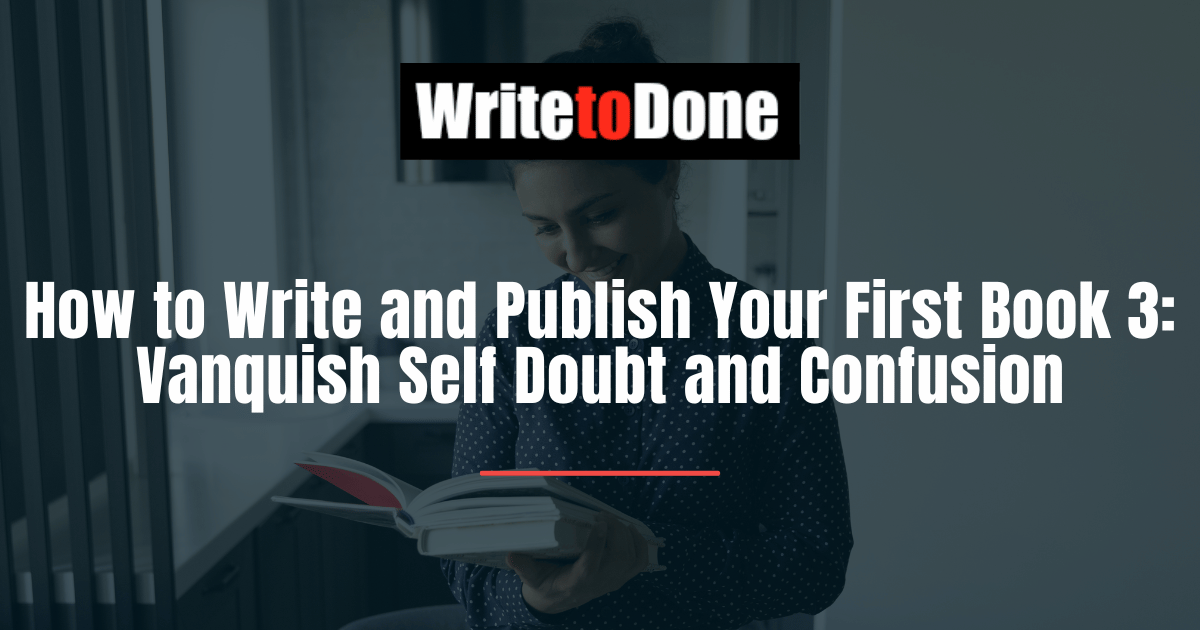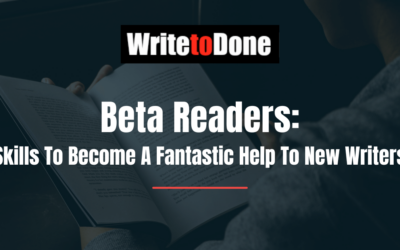When you write and publish your first book, you’ll find it is a peak experience.
If you have the slightest inclination of writing a book but have put it off for another year or another decade, start now and make it happen. Writing a book is satisfying, but I must confess, it’s also stressful and fraught with challenges.
At times, my journey of writing The Secrets of Youthful Aging has seemed like paddling a canoe in rough seas with sharks circling and the destination looking like a smudge on the horizon.
The two main ‘sharks’ are self-doubt and confusion. Luckily, I have found strategies to deal with these two challenges, and the destination—which is to publish my book successfully—is now within reach.
In this post, I’ll share with you what has helped me most.
How to Deal With Writer’s Doubt
One of the most difficult barriers facing an author is self-doubt. Writer’s doubt comes in waves. Whenever you read a book of a similar genre, you think your book won’t measure up.
Each time you look at a first draft of a chapter, your writing seems crummy and pitiful. At those moments, you conveniently forget that every first draft is ugly. It’s only when you later edit your writing and polish it that your writing can start to shine.
To get out of the downward spiral of doubt, ask yourself the following question:
Does my writing fulfill its purpose?
If you write a thriller, the purpose of your writing is to keep readers glued to the page with a heightened pulse. If you write an inspirational book (like me), you want your readers to feel inspired and uplifted.
You don’t need to be a brilliant writer. All you need to do is create a book that fulfills its purpose.
These 2 Strategies Will Squash Writer’s Doubt
Self doubt destroys the joy of writing. It can stop you from being creative and make you end up staring at an empty page. The trigger for writer’s doubt is a wonderful motivation gone rogue: the wish to write well.
You might imagine that wanting to write well is a useful motivation, but it has a dark side. When you want to write well, you tend to put words on the page and then immediately try to improve what you’ve written. The problem is that every time you stop to edit, you lose the flow of writing and feel more and more frustrated. The two following strategies are a powerful antidote to writer’s doubt.
Strategy #1: Write all the chapters first before editing.
When I first started writing my book on the secrets of youthful aging, I started editing the first chapter the day after writing it. This made me feel grumpy and self-conscious, so I quickly changed my workflow. I decided to write all the chapters first, and only then start revising.
This allowed me to get into the flow of writing. I found that it’s fine to leave chapters in a rough state and move on to the next one. I revised each chapter a couple of times after I had completed all of them, so it didn’t matter if they were a bit rough at first.
What I noticed during the first revision was that my writing was much better in the later chapters. This goes to show that regular writing increases the quality of your output. However, in the process of writing, output is more important than quality as you can see in the second tip.
Strategy #2: Focus on mass, not quality.
If you set yourself a target for a daily word count and stick to it, your doubts will fade into the background. Your focus will be on writing the daily amount of words, and not on the quality of the text you’ve created.
Each time I hit the required number, I felt satisfied. At that point, I didn’t care how ‘good’ or ‘bad’ my words were. All that mattered was that I got them onto the page, ready to be revised at a later stage. I use Scrivener LINK and I loved the little bell that sounds when the word count target is met!
How to Deal With Confusion
Once I had completed the chapters of my book, I started writing the introduction. I tried to write it several different ways but I ended up in a muddle.
Not only was I confused about how to write the introduction, I felt overwhelmed by the whole process of getting the book print-ready. It seemed like Mount Everest looming ahead, and the summit seemed unreachable, obscured by clouds.
At this point, Laura Tong, the Editor of WritetoDone, suggested buying Chandler Bolt’s book
Book Launch.
All my confusion evaporated as soon as I opened his book. It was as if Chandler reached out, took me by the hand, and led me through the whole process of writing my book and getting it print-ready, and then prepare it for publishing it on Kindle.
I devoured the chapter on how to write an introduction and immediately took the intro I had written, pulled it apart, and put it together again in a way that made sense. If you are thinking of writing a book, read Chandler Bolt’s Book Launch, or, if you get the opportunity, sign up to his webinar,
How to go from Blank Page to Published Author in 90 Days… And Use Your Book to Grow a 6-Figure Income.
In his book, Chandler devotes quite a few chapters to the editing process. He shows exactly how to find (and test) an editor, and then tells you exactly how to work with her or him.
This is the territory I’ve just stepped into.
A few days ago, I finished my revised draft and it was time to send it to a professional editor. Luckily, I already knew an excellent editor for my book. It’s Laura Tong, the Editor of WritetoDone. When I sent her my draft, I was shaking.
You see, the moment when you are on the brink of letting someone else read your book you feel terrified! Thoughts like this swirl through your mind: I’ve poured myself into this book, and now someone else is going to read it. What if they don’t like it?
When you get to this stage, take a deep breath and consider carefully who your first reader will be. Don’t give your book to a family member or a close friend. They are too close to you. The best person to send it to is the editor you have chosen, following Chandler’s blueprint or a fellow writer.
Once the book is in the hands of a professional editor, there are two parts to the editing process. First comes the content edit where the editor checks the impact of the book and the overall structure and flow. Then comes the copy edit where the editor checks for grammar and spelling.
My editor, Laura Tong, wrote back to me about the impact of my book:
First read through, I separated myself from knowing you and our conversations on this topic. I blotted out the fact that we’ve met so I could see how the book, and the author, left me feeling.
This was a single focus read to gauge my honest reaction. So how did I feel? Inspired. Encouraged. Excited. Awed. Filled with hope. And hungry for more of each story, those of the Youthful Agers and the Author – she struck me as just the kind of person I want to meet at a dinner party and still be chattering with long after the sun has come up. Next read through will be for consistency, pace, and flow. Can’t wait!
As you can imagine, I breathed a sign of relief…phew!
Once both the content edit and the copy edit are complete, I’ll invite twenty people as beta readers to get more feedback. The invitation will go out via email. Stay tuned!
How to Write and Publish Your First Book 1: The Secret of Agile Development
How to Write and Publish Your First Book 2: Beat the Mid-Way Slump

















